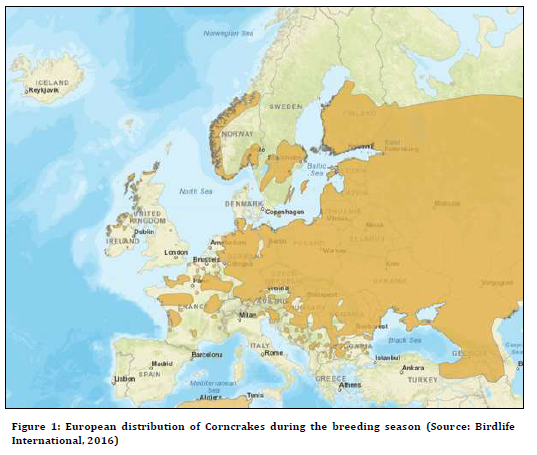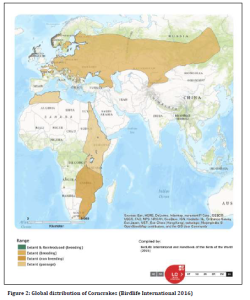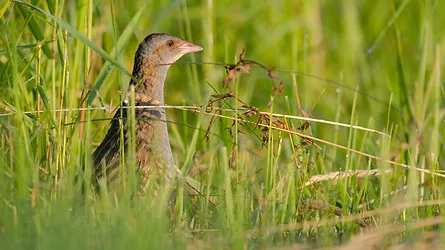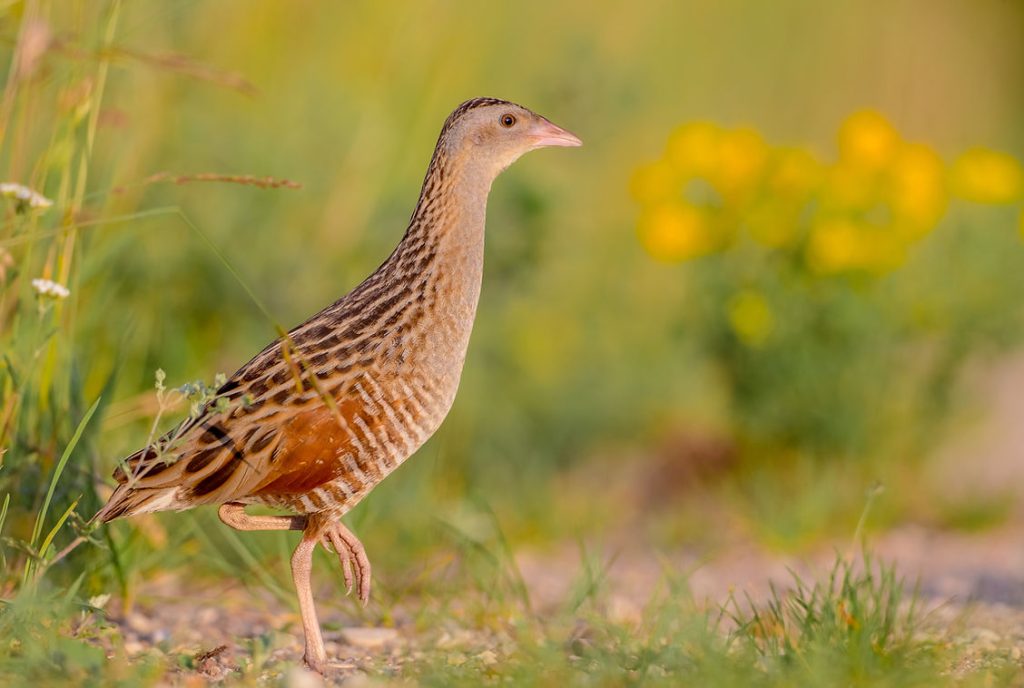
Ireland’s population of Corncrake has declined by over 96% since the 1970’s. In 2019, surveys carried out by the National Parks & Wildlife Service estimated 150 remaining pairs in Ireland (Donegal, Mayo and Connemara). This steep decline has mainly been associated with the mechanisation of mowing and the switch from hay to silage making. Where Corncrakes are suspected breeding, the delay of mowing /grazing allows eggs time to hatch and chicks to grow strong and fast enough to escape from mowers. Delayed mowing is optional in most cases, being compulsory within Corncrake Special Protection Areas only. Corncrake Friendly Mowing is carried out in tandem with delayed mowing.
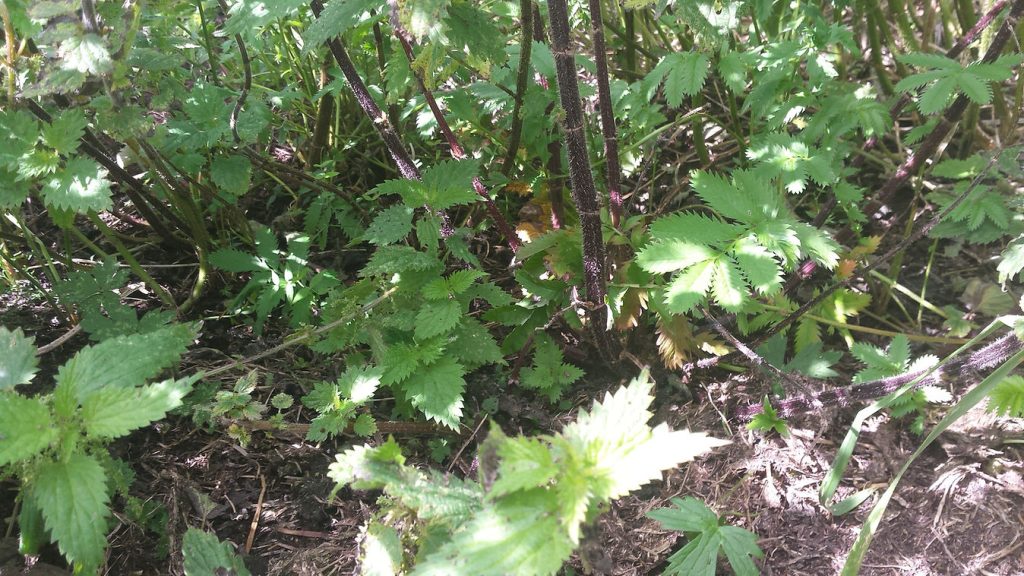
The scarcity of tall cover when birds arrive in April/May, and at the end of the mowing season, is a key limiting factor of population growth. Creating small stands of Early and Late Cover, such as iris, cow parsley or nettles, provides Corncrakes with essential cover at these times. Leaving small, unmown corners or strips aside in meadows also helps.
Corncrakes (Crex crex) breed in Eurasia, from Ireland eastwards across central and northern Europe and Russia, as far east as China. The global population is estimated to be between 1.8 and 3.2million singing males with at least 1.5 million of these in Russia. At least 300,000 are thought to breed in the Eastern European strongholds of the Baltic States, Georgia, Ukraine, Poland and Romania. Western European populations are much smaller, with populations of more than 1000 being found only in Germany and Scotland. Population decline and range contractions were observed during the late 19th and 20th centuries in many range states. This led to the classification of the Corncrake as a globally threatened species.
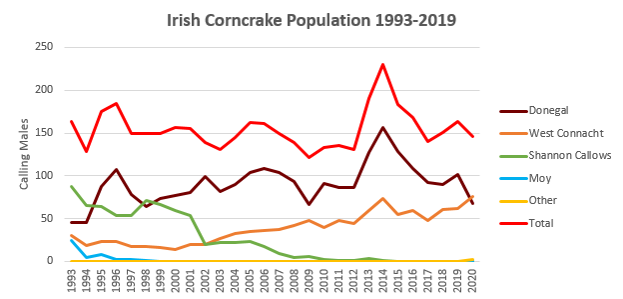
In Ireland, a long-term decline is thought to have started in the early 20th century. The population in the late 1960s/early 1970s was estimated at 4,000 individuals. A national survey carried out in 1988 recorded 903-930 singing males and identified three core breeding areas: North Donegal, the Moy Valley and West Mayo/Galway, and the Shannon Callows.
By 1993, during the third national Corncrake census, only 189 singing males were recorded and the population was almost entirely confined to the core areas, though by 1999, the Moy Valley population had been lost.
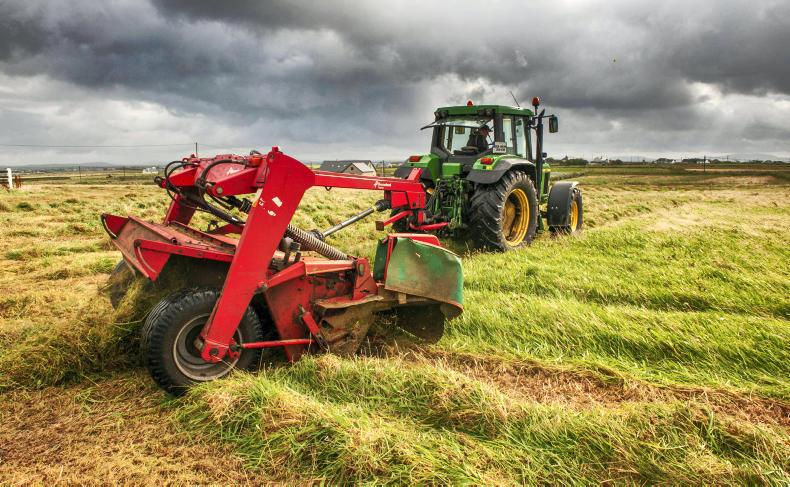
Mechanisation of mowing was regarded as the principle cause of the decline in most European range states, allied with earlier mowing and loss of hay meadows. Mowing of hay and silage fields during the breeding seasons destroys nests; in many areas of Ireland harvesting takes place from June onwards and thus overlaps with the nesting period; second nests are particularly vulnerable.
Machine mowing from the edges of the field to the centre results in the death of unfledged chicks, which are reluctant to escape across open ground to field margins; moulting females may also be at risk.
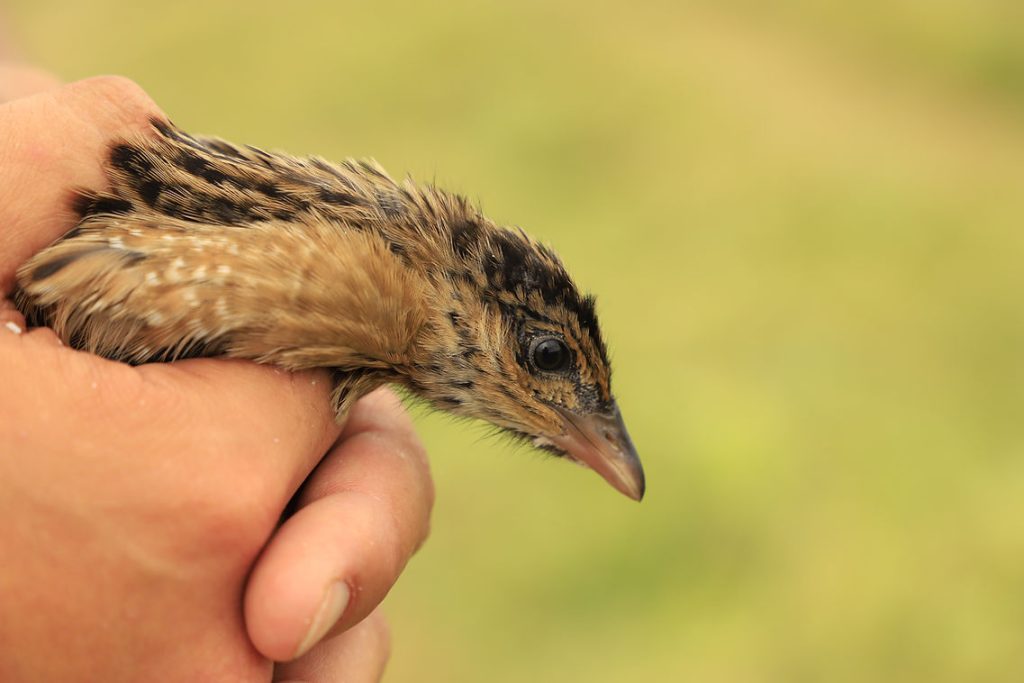
The development of conservation measures focused on delaying mowing until after the peak of hatching of second clutches, together with mowing fields from the centre outwards, to allow chicks to escape.
In the UK, the population increased from 480 calling males in 1993 to 1,245 calling males in 2014, mainly, it is believed, in response to the implementation of these conservation measures, though the population there has also decreased somewhat since 2014.
Provision of sufficient cover early in the season has also been shown to be an important factor in retaining populations and therefore effort was also focused also on the maintenance and creation of early cover and this is also likely to have contributed to the recovery.
Due to the discovery of large Eastern European populations, the Corncrake was reclassified in the IUCN Red List from ‘Vulnerable’ to ‘Near Threatened’ and finally to ‘Least Concern’ in 2010.
The species remains a high conservation priority; at a European level it is included in Appendix II of the Bern Convention, Annex I of the Birds Directive (2009/147/EC), and is listed on the Red List of Conservation Concern of most European countries.
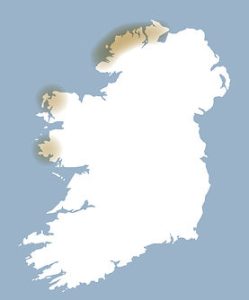
In Ireland, Corncrake is on the Red List of Birds of Conservation Concern in Ireland due to historical declines. A programme of conservation measures in the core areas has been adopted by NPWS since the 1990s; between 1993 and 2019, the national population decreased from 189 to 163. The functional extinction of the population on the Shannon Callows, where summer flooding had a severe impact, particularly in the early 2000s, has contributed to this decrease.
The population in West Connacht has increased by over 50% since the project was established, from 30 calling males in 1993 to 62 in 2019. The population in Donegal more than doubled during the same period, from 46 to 101 calling males. Conservation measures are likely to have contributed to the recovery in these areas, although a significant part of the population occurs on offshore islands of Donegal, where land abandonment is a core issue and conservation measures are minimal.
The proportion of calling males on offshore Donegal islands relative to the national population has increased significantly since 2000. An average of 37% of the national population was on islands from 2000-2008 and this increased to 55% from 2009-2017. The reasons for the increase on these islands is not clear, but is likely to include good productivity as a result of little (if any) mowing during the breeding season and reduced disturbance.

